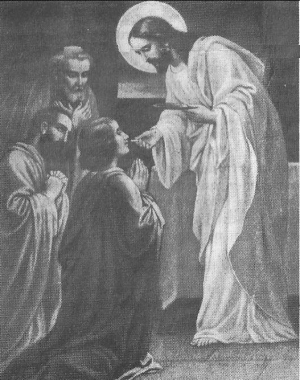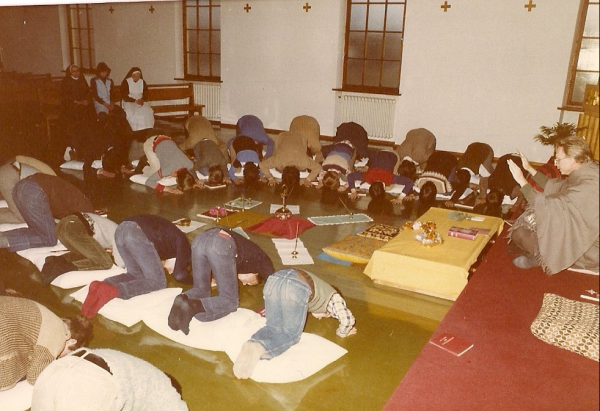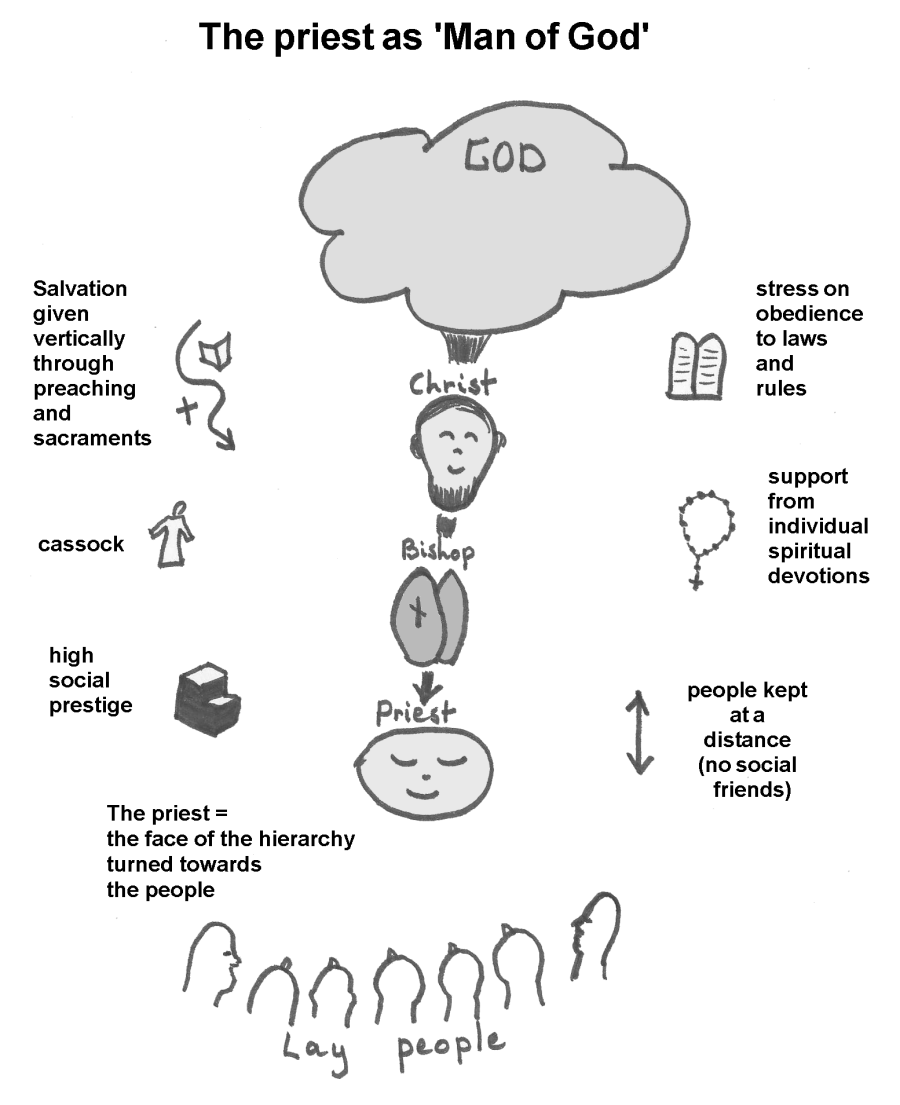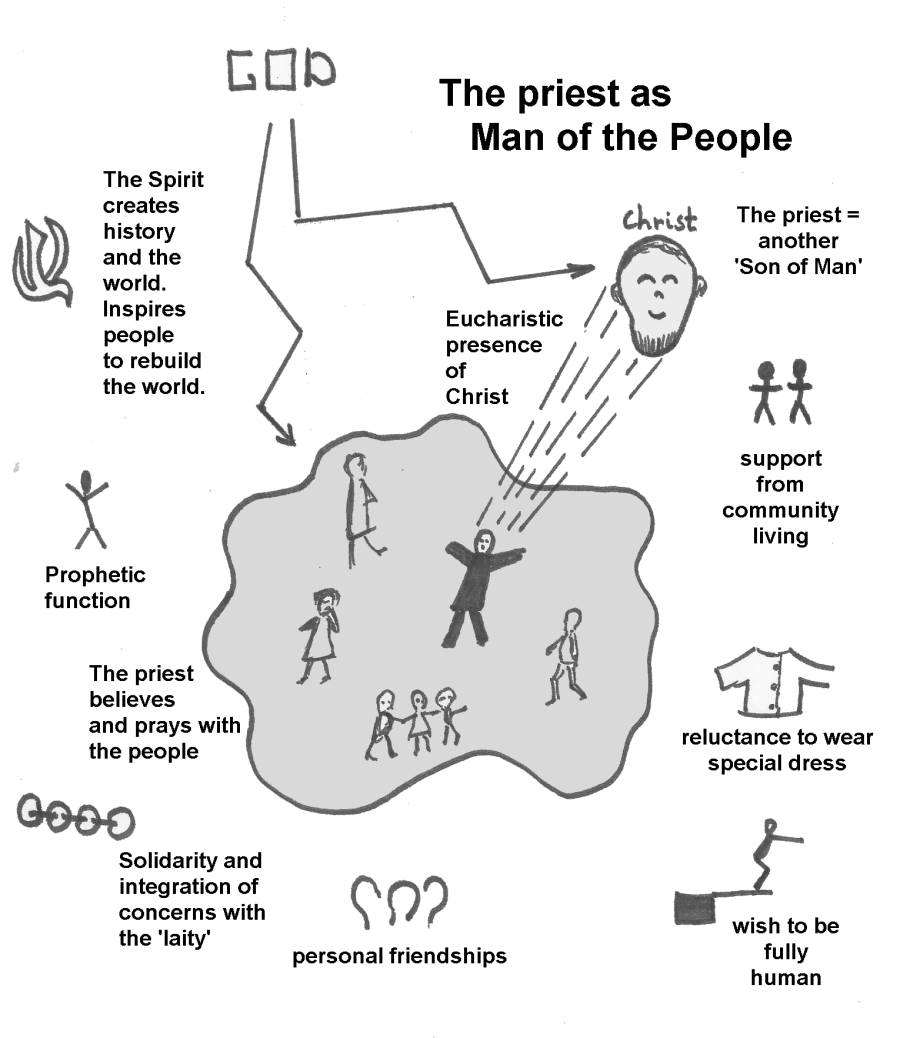Recruitment and Formation
One of the Society’s main tasks in the home countries was the recruitment and formation of new members. A vast structure had been built up to support this programme. It generated publicity about mission work (to attract candidates who normally would be about 12 years old), minor seminaries to provide high school education to the candidates and major seminaries to impart philosophy and theology.
In my own case, for example, I studied for 12 years in Mill Hill institutions: four years at the minor seminary in Hoorn, then two years in Haelen, then another two years philosophy in Roosendaal and a final four years theology in our motherhouse at Mill Hill near London. The system was reasonably productive. All students of the 10 minor seminaries Mill Hill ran in various countries converged in Roosendaal and Mill Hill. Of course, many candidates would drop out in the course of the years, deciding that the priestly ministry was not suitable for them. But the end result made the whole effort worthwhile.
I once calculated that, when I started my seminary studies in 1947, 185 others had also started in the other Mill Hill minor seminaries at the same time. On the day I was ordained a priest in 1959, there were still 28 of us left. A valuable addition to our Mill Hill work force.
But the situation had changed dramatically by the time I took up my job as director of the home regions.
Our houses of formation
In 1976, when I started in my new job, vocations to the priesthood had fallen dramatically both in Europe and North America. Tens of thousands of priests of my generation who had ‘sleepwalked’ into the obligation of celibacy, left the priestly ministry and got married. This made parents of teenagers afraid of encouraging, or even allowing, their sons to think of entering the priesthood.
Moreover, minor seminaries went out of fashion. Most youngsters did only choose their future career after finishing high school. Minor seminaries functioned as boarding schools, but parents rightly preferred their children to attend school from home. Also, our minor seminaries could no longer compete with the higher standards of teaching and the wider choice of subjects offered in secular schools. This rang the death bell for our minor seminaries in Absam (Austria), Brixen (South Tyrol), Tilburg (Netherlands South), Freshfield (England), Freshford (Ireland), Albany (USA) and eventually Hoorn (the North of the Netherlands) and Lochwinnoch (Scotland).
The only viable alternative was to encourage boys who felt an initial call to the missionary priesthood to join ‘contact groups’. While continuing to study in their local secondary schools such boys could be brought together in one of our Mill Hill houses for special weekends. There they could receive information about the missions, about the priestly ministry and the Mill Hill family.
I will not bore you with a detailed account of all the delicate consultations, and often painful decisions, society leaders were involved in to bring about this structural transformation. Instead, I will recount some incidents that may entertain you.
Our Missiehuis in Hoorn, built to accommodate 120 students, was, in 1976, a ‘spiritual’ hostel for about 15-20 minor seminarians who attended a local school during the day. The group was admirably led and motivated by Fr Cees Brohm. During one of my visits to the place, I was invited to celebrate Sunday Mass in the college chapel for the small community and for Catholics from the surrounding area.
After Mass, the students congratulated me. “We know where your real loyalty lies!”, one of them told me, laughing.
It turned out that during the eucharistic prayer when I had intended to pray for the local bishop who was called Theo Zwartkruis, I had in fact interceded for Jan Zwartkruis, coach of the Dutch football team!
Another incident.
During visits to our houses I had made it a practice to visit the small communities of nuns who looked after the cooking, washing and upkeep of the house – to thank them for their help. When I visited the community of nuns in Hoorn, one of them confronted me regarding the new post-Vatican-Council custom of giving communion on the hand. She was a Tyrolese Sister.
“It’s a disgrace!”, she said. “Communion should be given on the tongue!”
“Why?”, I asked. “In the early Church people received communion on the hand. The Vatican Council has simply re-instated the ancient practice.”
“No! No!”, she cried out. “Even Jesus, when Jesus himself gave communion, he gave it on the tongue!”

I challenged her: “How do you know?” She went to her bedroom and returned with a leaflet in German produced by an archconservative Catholic group. The leaflet attacked the practice of communion on the hand. As its centerpiece it showed a picture of the Last Supper. This portrayed apostles kneeling devoutly in front of Jesus who takes white round hosts (!) from a paten (!) and puts them on the apostles’ tongues. The article claimed that the drawing faithfully represented the vision of two stigmata-carrying visionaries: Anna Katherina Emmerick and Theresa Neumann of Konnersreuth. I translate an excerpt into English:
“When in 1927 the Swiss priest Alphons Büchel asked Theresa Neumann how (in her vision) the apostles went to communion, she replied: ‘Jesus himself broke the bread into smaller pieces and then placed a piece into the mouth of each apostle’.”
We had a long and interesting discussion!
Perils on the road
At times I had the opportunity of meeting groups of young candidates in person. I would then occasionally say Mass for them Indian style. I had brought with me from India the basic equipment to do so: the shawl that served as the priestly vestment; the central prayer lamp, the deepam; the Indian wooden corporal that held the paten and cup; utensils for the handwashing; agarbatti incense sticks; booklets with the Indian eucharistic prayer; the silver-plated dishes for arati worship and flower decoration.
Indian Mass was always said on a big carpet, with – as much as possible – everyone squatting on the floor. I would invite participants to join in the characteristically oriental gestures, like folding both hands while listening to the readings and bowing down in deep prostration after the words of consecration.
While Mass was going on I would explain the meaning of various rites and prayers. I myself loved saying Mass in this way and I believed it demonstrated how the essentials of the eucharist can be retained in a culturally different setting. Understanding the need of adaptation is crucial for missionaries.

Indian Mass for students at Herberthaus in Brixen. I am imparting the final blessing.
On one of my trips I almost landed in prison. Driving back north from Herberthaus in Brixen, where I had been celebrating Mass Indian style, I wanted to cross into Austrian Ost Tyrol via the Brenner Pass. At border control all checks were still in place: passports and luggage. I opened the boot of my car. An officer came by with two black sniffer dogs. These suddenly began to yap and bark, one of them even putting its front legs on the rim of the car’s boot.
In no time custom officers holding rifles surrounded the car. I was ordered to take the suitcases out of the boot. The dogs sniffed. They showed interest in one of them. It was the case containing the outfit for my Indian eucharist.
I was told to unpack it on the ground outside the car. Out came all the strange objects the Austrian officers had never seen before. The dogs jumped around with excitement. I explained, in German, what it was for. I showed them the prayer booklets containing the Indian Mass . . . Slowly they began to believe me. They were Catholics themselves.
I asked them what they were looking for.
‘Drugs’, they said.
In the end it proved to be the agarbatti incense sticks that were causing the problem. The sniffer dogs confirmed this. Relief all around. The officers slung their rifles back on their shoulders and shook hands with me.
The incense sticks were confiscated. Thankfully I was allowed to continue on my way.
Providing inspiration
It was usually young and enthusiastic members who were withdrawn from the missions to manage recruitment and promotion in our various Mill Hill home countries. Such members, it was argued, were better equipped to persuade teenagers to consider a missionary vocation. Maybe so, but it was a hard blow to these hardworking individuals who had begun to make an impact on difficult tasks abroad, and hard on the communities they had to leave behind. Even though their term of office at home was only five to six years, it caused serious disruption and heartbreak.
Moreover, these younger members were not always cut out for the promotion work expected from them. They had to learn how to cope with new forms of administration, how to deal with the local clergy or address classes of high school students. Appointing them to the job was not enough. They needed training, briefing, motivation. Making sure these were provided was one of my chief concerns. Apart from directing groups in the specific circumstances of each country, I also organized training seminars where they could be taught by professionals and where they could learn from sharing experiences with colleagues from other countries.
In this context it was important that they understood the enormous transformation in the image of ‘the priest’ since Vatican II. This had resulted in starkly contrasting ideals of the priesthood, each claiming allegiance from the clergy, the general faithful and future candidates. I devised some diagrams to draw out the differences.

The ‘man of God’ priest may be exemplified in Father ‘Holy’, a fictitious clergyman I am cobbling together from countless actual persons I have known.
Father Holy has worked as an exemplary parish priest in Zaire for many years. He has instructed and baptized catechumens. He has preached in Kikongo and Lingala, two of the local languages. He has heard confessions and given the last rites.
Having returned home because of ill health, Father Holy still renders part-time service in a local parish. He will always wear his clerical suit. He knows he has been chosen to be another Christ. He carries the unerasable stamp of the priesthood that makes him a living ambassador of God. He remembers this whenever he mixes with people. He will avoid making lay persons his close friends, especially women. He will not go to the cinema or read frivolous novels. He faithfully recites every day Lauds, Matins, Vespers and other hours of the Holy Office.
Father Holy is upset by seeing priests wearing a lay dress and spending evenings with families. He misses devotions such as saying the rosary or Benediction with adoration of the Blessed Sacrament. He is afraid that the Second Vatican Council has eroded respect for the priest as a sacred person. He shakes his head and prays . . .
Father ‘Community-man’ sees himself in a different light. While treasuring his priestly task, he does not see himself as different from everyone else. He does not feel comfortable wearing a cassock or black suit and clerical collar. He wants to mingle with people rather than stand out from them.
Yes, he realizes he is a leader. He has to bring about change in society. He has to help people discover God and live in harmony with the spiritual ‘Kingdom’ Jesus preached. But how can he do this if he does not know people intimately? If he does not experience their challenges and dreams? And: are lay people not his allies, equally called to priestly, prophetic and royal roles in their own part of the world?

Father ‘Community-man’ feels that, like Christ, he has to be a ‘man of the people’. The Church resides not in consecrated buildings but in the community of believers. His task as a priest is not to impart sacred gifts from above. His job is to evangelise the world from within . . . as Jesus did through his incarnation.
The clash between the various images led to confusion and struggle. In the talks I gave and seminars I organized I tried to help Mill Hill personnel understand what was going on. Although my personal sympathy lay squarely on the side of the ‘man of the people’, I always stressed that neither of the two concepts was correct in their extreme form.
“We, priests of our time”, I used to say, “have to find the balance between the two. We should be both men of God and men of the people. And we should learn to deal with the mix-up the two models cause in the minds of colleagues, friends and recruits. We should learn to allay the trauma and heal wounds.”
THE STORY OF MY LIFE
- » FOREWORD
- » Part One. LEARNING TO SURVIVE
- » origins
- » into gaping jaws
- » from the pincers of death
- » my father
- » my mother
- » my rules for survival
- » Part Two. SUBMIT TO CLERICAL DOGMA — OR THINK FOR MYSELF?
- » seeking love
- » learning to think
- » what kind of priest?
- » training for battle
- » clash of minds
- » lessons on the way to India
- » Part Three (1). INDIA - building 'church'
- » St John's Seminary Hyderabad
- » Andhra Pradesh
- » Jyotirmai – spreading light
- » Indian Liturgy
- » Sisters' Formation in Jeevan Jyothi
- » Helping the poor
- » Part Three (2). INDIA – creating media
- » Amruthavani
- » Background to the Gospels
- » Storytelling
- » Bible translation
- » Film on Christ: Karunamayudu
- » The illustrated life of Christ
- » Part Three (3). INDIA - redeeming 'body'
- » spotting the octopus
- » the challenge
- » screwed up sex guru
- » finding God in a partner?
- » my code for sex and love
- » Part Four. MILL HILL SOCIETY
- » My job at Mill Hill
- » The future of missionary societies
- » Recruitment and Formation
- » Returned Missionaries
- » Brothers and Associates
- » Part Five. HOUSETOP LONDON
- » Planning my work
- » Teaching teaching
- » Pakistan
- » Biblical Spirituality
- » Searching God in our modern world
- » ARK2 Christian Television
- » Part Five (2) New Religious Movements
- » Sects & Cults
- » Wisdom from the East?
- » Masters of Deception
- » Part Five (3). VIDEO COURSES
- » Faith formation through video
- » Our Spirituality Courses
- » Walking on Water
- » My Galilee My People
- » Together in My Name
- » I Have No Favourites
- » How to Make Sense of God
- » Part Six (1). RESIGNATION
- » Publicity
- » Preamble
- » Reaction in India
- » Mill Hill responses
- » The Vatican
- » Part 6 (2). JACKIE
- » childhood
- » youth and studies
- » finding God
- » Mission in India
- » Housetop apostolate
- » poetry
- » our marriage
